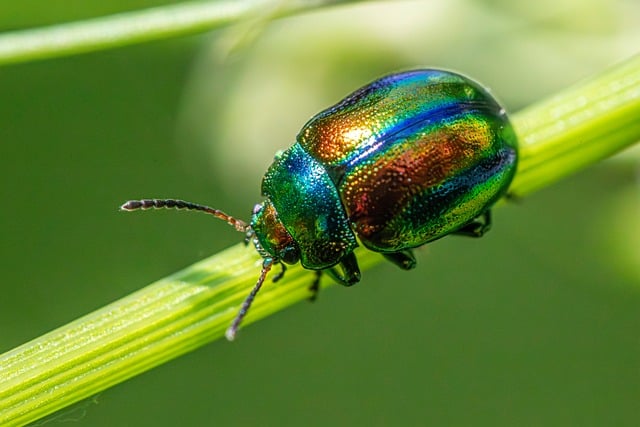In Highlands Ranch, cost-effective pest control for cattle pastures combines natural and strategic methods. This includes maintaining dense vegetation, introducing beneficial insects, proper sanitation, rotating grazing areas, and using organic repellents like citrus oils, garlic, or lavender. These practices protect cattle health, promote environmental sustainability, and align with eco-friendly farming principles.
In the vibrant, bustling landscape of Highlands Ranch, effective pest control is a priority, especially with flea and tick infestations posing significant challenges to cattle pastures. Understanding these pests’ behavior is crucial for implementing successful defense strategies. This article explores cost-effective prevention methods tailored for the unique environmental considerations of Highlands Ranch. From natural solutions to evidence-based practices, we provide a comprehensive guide to safeguard your cattle, ensuring health and productivity in your pasture.
- Understanding Flea and Tick Infestations in Cattle Pastures
- Cost-Effective Prevention Strategies for Highlands Ranch
- Implementing Natural Solutions for Effective Pest Control
Understanding Flea and Tick Infestations in Cattle Pastures

Flea and tick infestations can significantly impact cattle health and productivity in Highlands Ranch pastures. These external parasites are not only a nuisance but also pose serious risks to livestock, leading to reduced weight gain, poor overall condition, and even death in severe cases. Understanding the behavior and life cycles of fleas and ticks is crucial for implementing effective cost-effective pest control strategies.
Regular monitoring is key to managing these pests. Identifying areas where cattle congregate or rest often reveals infestations early. Seasonal variations play a significant role; flea populations tend to peak during warmer months, while ticks are more prevalent in the cooler seasons. Using this knowledge, farmers can time their treatments accordingly, ensuring maximum efficacy and minimizing the use of chemicals. Cost-effective pest control methods for cattle pastures in Highlands Ranch include integrated pest management strategies that combine natural predators, regular grazing rotation, targeted applications of pesticides when necessary, and keeping cattle shelters clean to deter parasite activity.
Cost-Effective Prevention Strategies for Highlands Ranch

In Highlands Ranch, cost-effective prevention strategies for flea and tick defense in cattle pastures involve a combination of natural practices and strategic treatments. One effective method is maintaining a healthy landscape with dense vegetation that acts as a natural barrier against pests. Regular mowing and trimming not only keeps the area tidy but also reduces the risk of pest habitats. Additionally, introducing beneficial insects like ladybugs and lacewings can help control flea and tick populations naturally, making it an eco-friendly option for cost-conscious ranchers.
Implementing proper sanitation practices is another key strategy. Removing dead leaves, grass clippings, and other debris from pastures reduces pupal sites for ticks and fleas. Regularly cleaning water sources and ensuring proper drainage prevents standing water, which serves as breeding grounds for these pests. Moreover, rotating grazing areas can disrupt pest cycles, making it a sustainable approach that aligns with cost-effective pest control for cattle pastures in Highlands Ranch.
Implementing Natural Solutions for Effective Pest Control

In search of cost-effective pest control for cattle pastures in Highlands Ranch? Natural solutions offer a sustainable and environmentally friendly approach to managing fleas and ticks. By incorporating organic practices, ranchers can effectively protect their herds without resorting to harmful chemicals. One powerful method involves utilizing beneficial insects like predacious mites and ladybugs, which feed on flea populations, acting as a biological control.
Additionally, maintaining pasture health through proper grazing management and regular vegetation cutting creates an environment less favorable for pests. Natural repellents such as citrus oils, garlic, and lavender can also be applied to livestock and pastures, deterring fleas and ticks. These strategies not only provide effective pest control but also contribute to a healthier ecosystem within the Highlands Ranch cattle farming landscape.
In conclusion, protecting your cattle from flea and tick infestations in Highlands Ranch is a multifaceted approach that combines understanding, prevention, and natural solutions. By implementing cost-effective strategies discussed in this article, you can significantly reduce the impact of these pests on your livestock’s health and productivity. Remember, proactive measures are key to maintaining a thriving and healthy cattle pasture.
